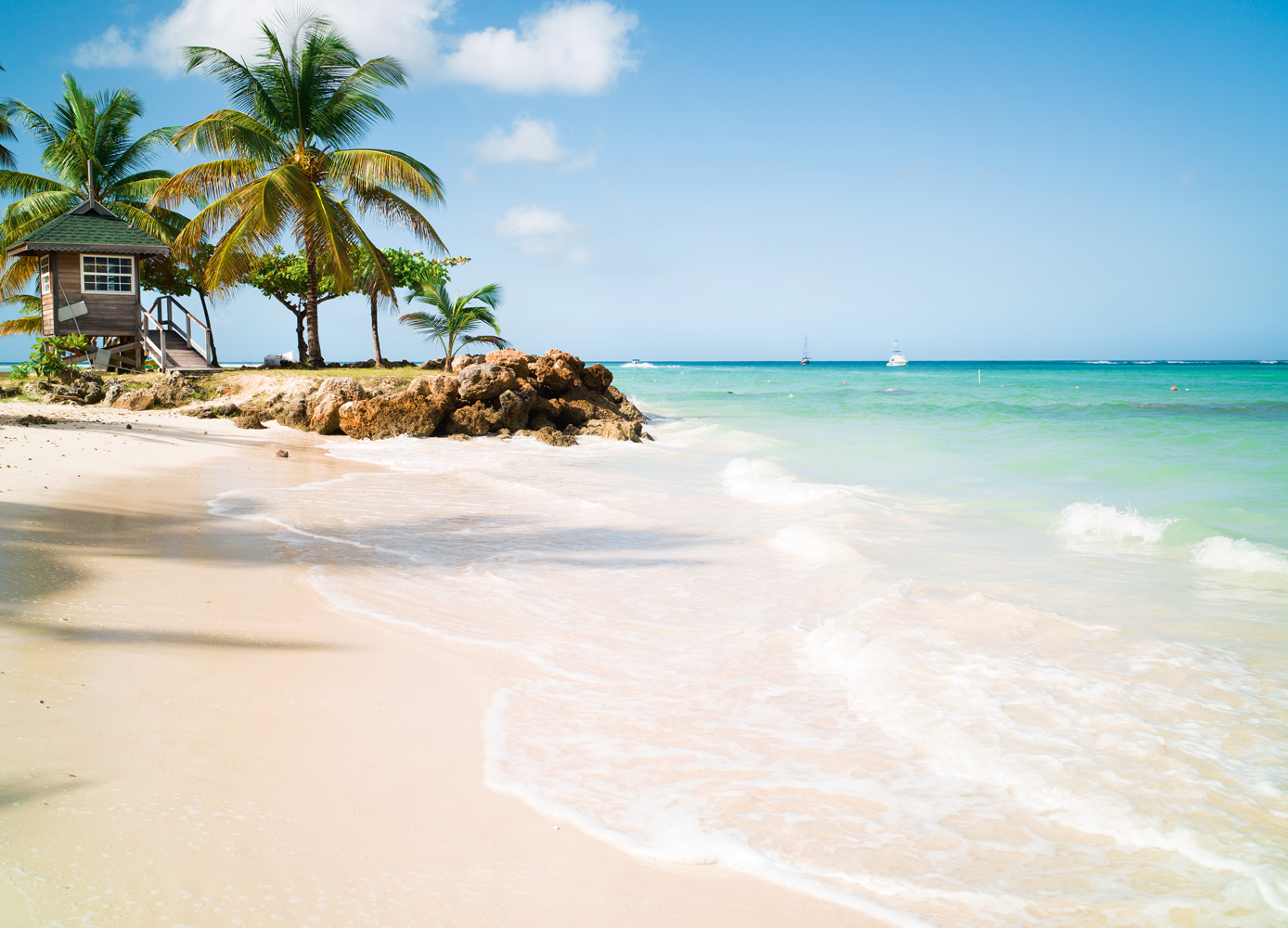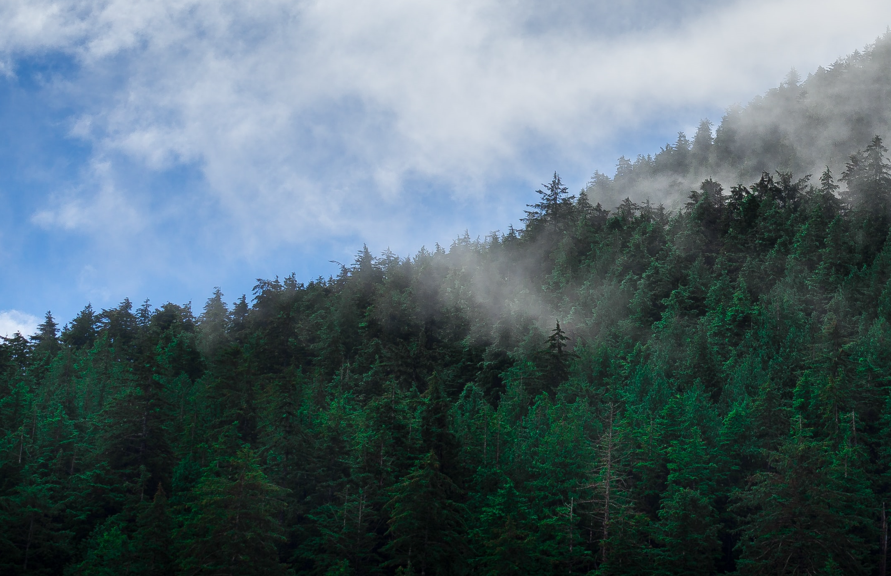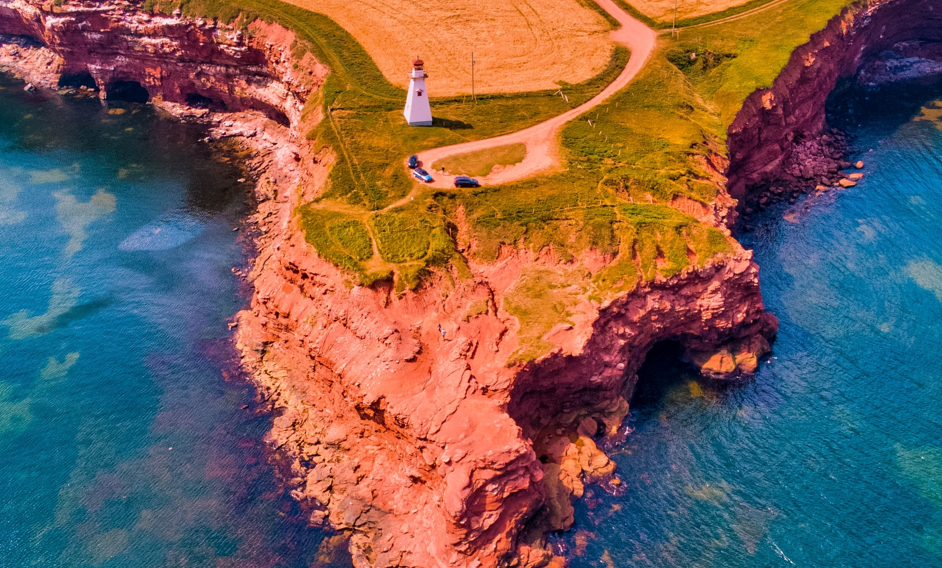Lovely and low-key, this Caribbean island offers the perfect escape
By Lola Augustine Brown
I’d been looking forward to eating at Jemma’s Treehouse restaurant since I first looked into Tobago as a potential vacation destination. In truth, there wasn’t that much info to be found about the island, with the majority of websites dedicating more space to its bigger sister island, Trinidad, but everything I did find mentioned Jemma’s—a restaurant built into the branches of a massive almond tree that hangs over a pretty beach.
Our server brought out huge plates of lobster, shrimp, curried chicken, plantain, okra, and fish, all of which was delicious and wonderfully fresh—almost every bit of food on the island is grown or raised there, or hauled directly from the sea.
Located off the coast of Venezuela and 35 kilometres (22 miles) northeast of Trinidad, Tobago boasts a climate and environment that support the growth of a variety of foods. During the 1780s, sugar became the major crop on the island (supported by the slave trade), and the industry thrived there for 200 years. The remains of sugar plantations are scattered everywhere. In fact, Mount Irvine Bay Resort, where I stayed, is built on the site of one; its decadent Sugar Mill Restaurant incorporates a still-standing brick mill. Home to the world’s first dedicated nature reserve, Main Ridge Forest Reserve, which Britain’s Parliament declared a protected conservation area in 1776, Tobago supports a huge variety of flora and fauna, both on land and offshore. It’s a very special place to visit.
Not overly developed, Tobago has several lovely hotels, but no super-high-end places—yet. The island feels like a sweet secret spot that’s just waiting to be discovered—and that might happen soon, as there’s a $1.2 billion airport upgrade in the works that the island believes will attract many more airlines. One of the few direct flights from Canada currently is a weekly offering from Sunwing Airlines out of Toronto. The word unspoiled gets thrown around a lot in tourism, but it really does apply to much of Tobago.
Nylon Pool and No Man’s Land
Naturally, the beaches of Tobago are beautiful, and the clear turquoise waters, inviting. Chilling out at those beaches and on the water is really what the island is all about, enjoying nature and savouring the quiet moments—this isn’t a flashy island with a lot of expensive things to see and do.
Getting out on a boat with Waterholics was an excellent way to see some of Tobago’s most popular and famous attractions. We began our day at pretty Pigeon Point. We waited for our boat on a perfect white sand beach, where gentle waves lapped at our toes against a backdrop of palm trees. The boat was just big enough for the captain, the mate, and the six people on our tour, so it felt intimate. The captain pointed out areas of interest as we sped along with the wind in our hair and the sun on our faces. The first stop was the nearby coral gardens of Buccoo Reef, where I pulled on a mask and flippers to snorkel with schools of bright fish, a bright-green eel, and huge corals. It was beautiful down there, and I envied the scuba divers getting better views by going deeper.
Then we moved on to the Nylon Pool, a natural shallow pool in the sea created by a sandbar and partially surrounded by the coral reef. So-named by Princess Margaret in 1962 because the water was as transparent as her nylon stockings, it’s a gorgeous place for a wallow. Soon after we got there, several other larger party-cruise boats turned up, playing reggae music; while there was plenty of space and their arrival didn’t spoil the fun in any way, I was glad to be there on a smaller boat tour.
For lunch, we cruised over to No Man’s Land, a sandbar off a mangrove lagoon that acts as a nursery for much of Tobago’s rich and varied sea life. It was Alex Nedd, the owner of Waterholics, who first cleaned up the mangrove-fringed sandbar and set up a spot to serve food and drinks to those on his tours; he encouraged other local operators to join in and now it’s a vibrant place to sit and eat, cold beer in hand, taking a dip in the warm water whenever you wish.
We sat under a shady harem-style tent, with mats and cushions on the floor, feasting on curry crab and dumplings (Tobago’s favourite dish), macaroni pie, pigeon peas, plantain, and spicy stewed beef. It was a delicious end to a fabulous day on the water, and by the time we got back to our hotel (3 p.m.), I was more than ready for a nap in my air-conditioned room.
The Inner Island
Connecting with natural beauty on Tobago is easy, and on a tour of the Tobago Main Ridge Forest Reserve with avid birder and experienced guide Newton George, I learned that many visitors come to the island for its huge and diverse concentration of birdlife. In fact, while walking the reserve, we ran into a couple from Sweden who had come just for the birds and were in raptures over how many species they’d spotted. Following the trails in the reserve takes you to hidden waterfalls, perfect for a quick dip to refresh yourself before heading back.
At Adventure Farm and Nature Reserve, owner Ean MacKay has built a paradise of fruit trees and hummingbird feeders, where to the delight of visitors, he rings a bell and dozens of hummingbirds descend to dine, hovering around the line of 14 feeders and dishes of fruit left out for them. It’s a magical experience, with up to five different varieties of hummingbird in attendance, and touring the grounds, you’re likely to spot many other bird varieties feasting from the fruit trees planted there. The reserve also offers villas, which offer privacy as well as birding opportunities from the deck and windows.
Mangroves are vital to the Tobago ecosystem, providing nurseries for ocean life and holding the shores of the island in place. By day, you can walk the boardwalks of the mangrove forests at the Tobago Plantations Estate to see the majestic roots rising from the water and enjoy the cool (if slightly eggy-smelling) breeze. Exploring the mangroves at night, however, is a very different and amazing experience.
Tour guide Dave Elliott of Frontier Divers runs a night-kayaking tour through the Buccoo Reef mangrove lagoon, where natural bioluminescence makes every oar stroke through still waters sparkle with millions of tiny stars. Our kayaks were glass-bottomed, and we could see streaks of light between our legs as we paddled. It was a riveting natural phenomenon to experience.
Caribbean Tastes
Dining in Tobago, every meal was a treat, whether it cost a few dollars or took me somewhere fancy. And every meal is a big meal—there are no skimpy portions, whatever you order. Rum is king, as on every other island, but if you’re after a soft drink, you must try a wonderfully refreshing Angostura LLB, which stands for lemon, lime, and bitters. (Angostura is a big Trinidad and Tobago rum producer better known in many parts of the world for the bitters that are essential to any well-stocked cocktail cabinet.)
Every morning, roadside stands sell “doubles,” a sweet fried dough stuffed with spicy chickpeas. When we went out to walk the mangrove forest, we stopped at Fairways Restaurant & Golf Lounge for traditional “Saturday soup”; I opted for the beef soup, which came full of cassava, green banana, squash, corn, and carrot. “Saturday is always soup day here,” our server explained, “because Mom is tired of cooking and just throws everything to simmer in the pot on Saturdays so she can get on with her cleaning.” It was rich, thick, and very tasty.
Dinner on our first night was decidedly upscale. We sat on a huge patio at The Seahorse Inn Restaurant & Bar among tropical blooms with patio lanterns strung overhead, listening to the waves crashing against the rocks across the street, just a few feet away. The ambience was romantic, and the food, wonderful. I gorged on seared scallop risotto and lamb in a port reduction, with white-chocolate rum-and-raisin bread pudding for dessert.
At The Fish Pot, I started with rum and liver pâté, followed by crab cakes (all crab, no filler) served with a picante salsa. I’d been excited to eat there because everyone I’d asked for food recommendations had told me about their “world-famous” coconut cheesecake. It was dreamy, almost flanlike in texture and caramelized around the edges.
One of the most surprising flavours ever to pass my lips was that of the cocoa beans I picked fresh off the tree during a tour of the Tobago Cocoa Estate. The white fruit tasted like a cross between Sour Patch Kids and Jolly Ranchers—not at all chocolatey. On the tour, we learned how chocolate is produced and processed, and then got to drink the estate’s delicious chocolate with a dash of rum chaser.
The food at the hotel was great, too, and every morning I started my day with piles of fresh pineapple and papaya, salt fish, and fry bread. When we ate dinner at the hotel, everything was fresh and delicious, and the cocktail bar was a fun place to hang out. The hotel coffee bar served up great sandwiches, as well as cookies the size of your hand. It was a fabulous place to stay, and, for those into golf, the course there apparently is excellent.
Festival Vibes
As low-key as Tobago is in many ways, the islanders love to party (the local term is “lime,” as in, “You limin’ later?”). This is especially true at Carnival time—the Monday and Tuesday before Ash Wednesday—and all through Easter. Visiting at the end of January, I found festival preparations decidedly under way. Driving past schools, we heard the children’s steel-drum practice through the open windows; it was utterly charming.
Every Sunday night, you can hear steel-drum bands play at Buccoo Sunday School, a street party where locals and tourists gather to listen and dance. Playlists range from the traditional to covers of Céline Dion, and it’s hard not to start dancing. After the bands finish, at about 11 p.m., a DJ gets going and the party gets a lot busier. If you love to have a few cocktails and dance, you’ll find a row of bars in Crown Point, but if you get there before midnight, you’ll find things are very slow—Tobagonians start their evenings late and party until the early morning hours.
One of the biggest festival events is Goat Races Day. I got to meet local goat-racing champion Anthony Horsford, who was exercising his prize goats while in Tobago. “I’m really more of a goat trainer these days,” he told me as I watched one of his assistants sprint past leading Horsford’s best goat, The Punisher. Goat races are a huge deal to locals—the sport originated in Tobago in 1925 and later spread to other Caribbean islands. “Winning is really about bragging rights; the money isn’t worth it,” Horsford explained. Up to 20,000 people watch the Easter races, and a lot of bets are made—unofficially, because it isn’t strictly legal. How does Horsford encourage The Punisher and his other goats? “If the goat don’t run good, I tell him he’ll be in the pot and I’ll serve him with dumplings; then he runs faster.”
Back to the Beach
I squeezed as much beach time into my trip as I could, which was easy, as Mount Irvine Bay Resort has a private beach where I swam every morning before heading out to explore. The water was warm and inviting, with the tiniest waves; floating in the water as the sun went down in the evening was bliss, too.
On our initial Waterholics boat tour, our captain had pointed out lots of secluded coves accessible only by boat. “Those are lovers’ beaches,” he told us. I desperately wanted to visit one, so on our final day in Tobago, we hopped aboard a chartered fishing boat at Charlotteville for a quick ride over to Pirate’s Cove.
We jetted out past fishing boats laden with bamboo fishing poles and landed on a sparsely populated beach that sported a makeshift bar made of bamboo and looking as if it would blow away in the slightest breeze. A pirate flag flew at the little bar, where Bob Marley’s music played as the staff served up rum punch. The water was a little choppier here than I’d seen, but a reef was teeming with fish. It was perfect, and I alternated between sunning my pale body and swimming with the fish (I always take a snorkel and mask with me whenever there’s a chance of getting out in the ocean). It was very hard to leave, especially as the next day, I’d likely have to dig my car out of the snow at the Halifax airport, but eventually the boat came back to pick us up and off we went.
Safe Travels?
At the time of writing this, none of us is travelling anywhere, which is sad, but I believe that when things open up, Caribbean destinations are going to be some of the safest places to visit. Islands had strict COVID-related protocols put in place that stopped tourism in its tracks, even though they’re heavily dependent on tourism dollars. We’ll have to see what the future holds, but I know that I’ll be heading back to see more of Tobago. My post-COVID bucket list includes learning to scuba dive on the Buccoo Reef, considered one of the safest and most pleasant places to get one’s PADI (Professional Association of Diving Instructors) Dive Certification.
Tobago is lovely, friendly, and a little different from other, busier Caribbean destinations. I’ll be dreaming about that wonderful trip while I’m grounded here and cursing another Canadian winter.
Photo: Lola Augustine Brown.






